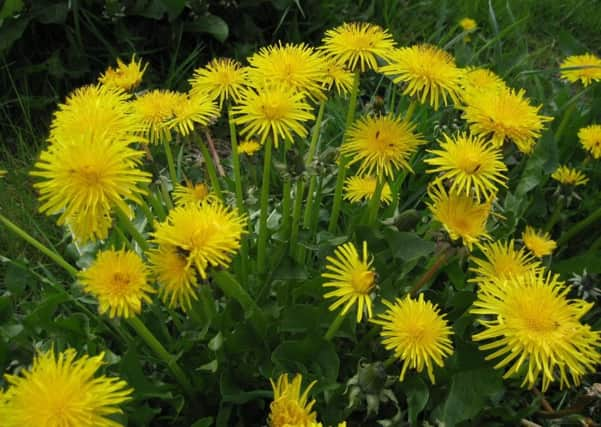Country Diary: Humble plant and its many medicinal uses


I personally recall, when I was a youngster, a piece of news that astounded the public.
Someone, aware of the attraction of its vivid colouring, created charming buttonholes with the addition of a piece of fern, and silver, foil-bound stems.
Advertisement
Hide AdAdvertisement
Hide AdThese were sold to gullible ladies under the Latin name, Taraxacum dens leonis, for the princely sum of half-a-crown (12½p)!
The gay flower-heads, appearing as attractive as marigolds, were very much appreciated. The very impressive Latin name possibly helped boost sales.
The name ‘dandelion’, comes from the leaf margin which is cut into great jagged teeth, resembling the canine teeth of a lion.
This gives it the French name ‘dent-de-lion’ or in Latin ‘dens leonis’.
Advertisement
Hide AdAdvertisement
Hide AdOur forefathers used this plant as a medicine. Dandelion tea was a panacea for fevers and liver troubles. It was also believed to be good for the complexion.
In springtime, the tender young leaves would be cooked as a vegetable, or eaten raw in a salad.
The thick tap root has often been used to make ‘coffee’. The whole root was washed, and then ground to replace coffee beans. Some folk claim that dandelion ‘coffee’ is superior to most, which are often adulterated products.
The dandelion’s flower structure in itself is remarkable. Numerous florets constitute the flower head, and in each little tube lower down is a copious supply of sweet nectar, which more than half fills it. Hence, the attraction to insects.
Advertisement
Hide AdAdvertisement
Hide AdDozens of varieties frequent the blooms, and you must have seen large numbers of tortoiseshell butterflies resting and sipping nectar from each flower head.
By so doing, they inadvertently effect pollination, and the ultimate fertilisation resulting in seeds.
It’s wonderful to have the hours of daylight increasing. Taking Tigga for a walk in the early evening reveals the calls of song-birds before they go to roost.
Great tits have scores of different calls, but most of their calls have a distinctive metallic or ringing quality, which helps identify them, such as “chink”. The song is a loud “teacher-teacher-teacher”.
Advertisement
Hide AdAdvertisement
Hide AdThe song thrush is a familiar garden bird, but has declined considerably in many places. It used to be more numerous than the blackbird, but this situation has now been reversed.
The superb song is one of my favourites. Each song phrase of two or three syllables is repeated two to four times, usually from a low perch such as a bush or building.
You always know when a song thrush is in the area, if you discover a thrush’s ‘anvil’, the site where snail shells are broken against a stone to access the soft body.